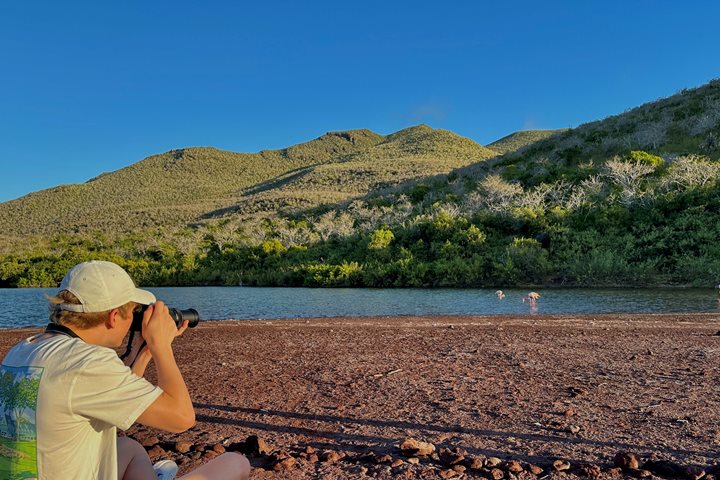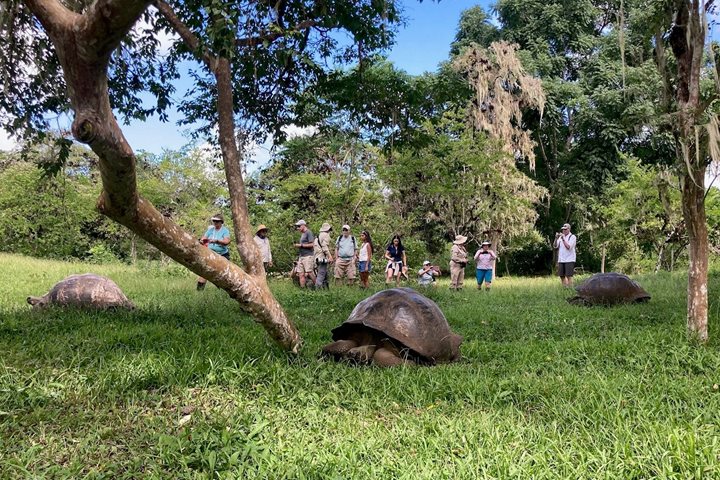Situated at the easternmost segment of the Galapagos Archipelago is San Cristóbal, the fifth-largest of the islands. It is comprised of three or four fused volcanoes, all of which are extinct, despite one being still properly elevated to provide fresh water and nutrients for the surrounding soil, making it a choice area for agriculture. The island’s name honors the patron saint of seafarers, Saint Christopher, but prior to 1892 was named Chatham, after John Pitt, second Earl of Chatham. This island is home to one of the oldest permanent settlements across the archipelago and was the first to be visited by Charles Darwin in 1835; nowadays Galapagos is a province of the Republic of Ecuador and Puerto Baquerizo Moreno its political capital.
After breakfast we rode in a fleet of Zodiacs to town, whereupon we boarded buses, en route to the highlands and passing the agricultural interior to finally arrive at La Galapaguera, a tortoises breeding center established by the national park system in 2003. Walking along the narrow trail, we observed giant tortoises living in a semi-natural habitat and trundling freely along a forest of cat’s claw and acacia trees.
The only one species of tortoise found is San Cristobal is the Chelonoidis chathamensis, which has an intermediate carapace, which means that is not completely domed and not completely saddle-back, this is due to the altitude of a place with ample vegetation but one warmer than the highlands. We visited the cages where the baby tortoises remained together. The youngest individual being just three months old and others between one and a half years. We arrived at the platform where the tortoises are fed, allowing us to distinguish the center’s biggest males and several females feeding on grass and drinking water.
In the afternoon, we came back to town; we boarded the buses to take us to the far side of town to visit Frigate Hill, to visit the frigate birds’ nests and the bay where H.M.S. Beagle anchored in 1835. Along the paved path that leads to the top of the hill we observed several lava lizards and mockingbirds, which are endemic to the island, while on the branches of trees, ground finches and yellow warblers were a visual delight for our guests.
Just before sunset, we returned to National Geographic Islander, observing as the last moments of sun, being witnesses of the magnificence of this magical space.







